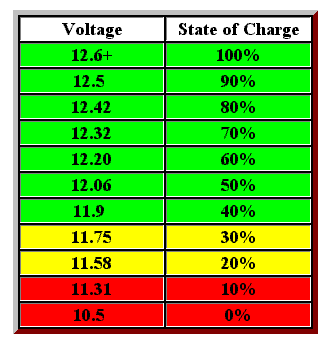Ultimately, David, I am quite surprised you havent popped for a shell for your Tacoma, with all the Baja camping you do. Just better protection for
your stuff and it would make a great location for a solar panel. I assume it is because it would limit your ability to use the truck's bed for your
irrigation business.
You could actually put a strapped-down marine battery box in the bed, incorporate a small solar system into your truck's charging system and put an
AGM back there with an isolator that allows the engine to charge it but prevents a discharge of your starting battery. Of course, we are still talking
about probably around 1200.00 including the refer, solar panel, charge controller, grp 27 AGM battery, isolator, wiring.
Of course, with all that capability, you'd probably want an inverter to occasionally run something else. That would be more.
Then, there's the cost of the shell.............suddenly, this would all buy a lot of ice.  |




















 ... We're not talking AGM here, not to mention that Lifeline is
the best AGM. Regular garden variety starter battery isn't that sturdy. Deep cycle are studier, but lifespan and depth of discharge are in inverse
relation, the deeper you discharge it the shorter it lasts.
... We're not talking AGM here, not to mention that Lifeline is
the best AGM. Regular garden variety starter battery isn't that sturdy. Deep cycle are studier, but lifespan and depth of discharge are in inverse
relation, the deeper you discharge it the shorter it lasts. 
 [/img]
[/img]
